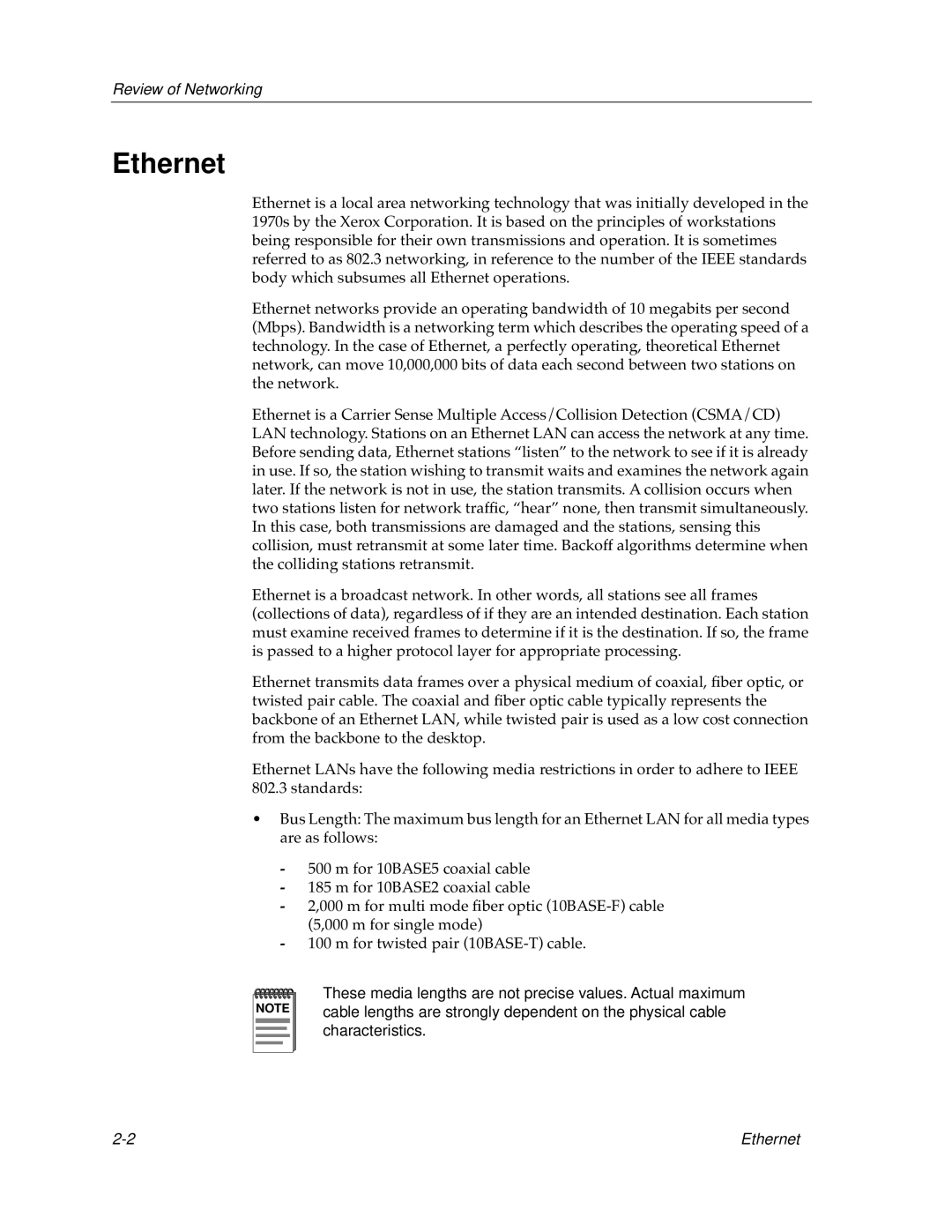
Review of Networking
Ethernet
Ethernet is a local area networking technology that was initially developed in the 1970s by the Xerox Corporation. It is based on the principles of workstations being responsible for their own transmissions and operation. It is sometimes referred to as 802.3 networking, in reference to the number of the IEEE standards body which subsumes all Ethernet operations.
Ethernet networks provide an operating bandwidth of 10 megabits per second (Mbps). Bandwidth is a networking term which describes the operating speed of a technology. In the case of Ethernet, a perfectly operating, theoretical Ethernet network, can move 10,000,000 bits of data each second between two stations on the network.
Ethernet is a Carrier Sense Multiple Access/Collision Detection (CSMA/CD) LAN technology. Stations on an Ethernet LAN can access the network at any time. Before sending data, Ethernet stations “listen” to the network to see if it is already in use. If so, the station wishing to transmit waits and examines the network again later. If the network is not in use, the station transmits. A collision occurs when two stations listen for network traffic, “hear” none, then transmit simultaneously. In this case, both transmissions are damaged and the stations, sensing this collision, must retransmit at some later time. Backoff algorithms determine when the colliding stations retransmit.
Ethernet is a broadcast network. In other words, all stations see all frames (collections of data), regardless of if they are an intended destination. Each station must examine received frames to determine if it is the destination. If so, the frame is passed to a higher protocol layer for appropriate processing.
Ethernet transmits data frames over a physical medium of coaxial, fiber optic, or twisted pair cable. The coaxial and fiber optic cable typically represents the backbone of an Ethernet LAN, while twisted pair is used as a low cost connection from the backbone to the desktop.
Ethernet LANs have the following media restrictions in order to adhere to IEEE
802.3 standards:
•Bus Length: The maximum bus length for an Ethernet LAN for all media types are as follows:
-500 m for 10BASE5 coaxial cable
-185 m for 10BASE2 coaxial cable
-2,000 m for multi mode fiber optic
-100 m for twisted pair
NOTE |
These media lengths are not precise values. Actual maximum cable lengths are strongly dependent on the physical cable characteristics.
Ethernet |
